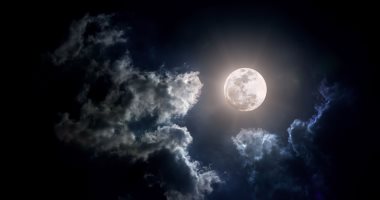During the current month of March, the sky is witnessing 9 astronomical phenomena, most notably the spring equinox on March 20 and the appearance of the (worm) moon on March 28..
Ashraf Tadros, a professor of astronomy at the National Institute for Astronomical and Geophysical Research – said in a statement to the Middle East News Agency today – that the first of these astronomical phenomena will take place tomorrow, Wednesday, which is the conjunction of Mars with the Pleiades star cluster or (Seven Sisters) located in the constellation Taurus and can be seen with the naked eye Upon nightfall at around 7 p.m. until sunset around midnight.
He added that this scene can be seen from tomorrow for a period of 5 days, but that the real conjunction will happen the day after tomorrow when Mars is as close as possible to the Pleiades, indicating that, next Friday, Jupiter will be coupled with the planet Mercury in the early morning on this day, And this scene can be seen at sunrise at five in the morning until sunrise, as the morning twilight light is intensified by the sunrise and we cannot see them at that time..
He explained that on March 6, Mercury will reach its maximum elongation of 27.3 arc degrees from the sun, which is the best time to view and photograph Mercury because it will be at its highest point above the eastern horizon in the early morning sky before sunrise..
He continued, saying that on March 10-11, the four celestial bodies (the moon, Jupiter, Saturn and Mercury) can be seen in the early morning from five in the morning until the twilight intensified by the sunrise, which hides these bodies of course, explaining that the moon will be closer to Jupiter and Saturn on the 10th day. March, and closest to Mercury on March 11th.
He pointed out that the new moon (Alhak) will appear in the sky on March 13, when the moon will rise and set with the sun at approximately the same time, so the moon will not be visible in the sky all night, and it is the best time of the month to observe faint celestial bodies such as galaxies, clusters, or star clusters. And distant constellations and stars.
He added that there will be a conjunction between the moon with the planet Mars and the red star Aldebaran (the eye of the bull) located in Taurus on March 19, and this scene can be seen in the sky when the night enters at 6:30 pm until about 11 pm and 15 minutes..
And he revealed that the spring equinox occurred on March 20, marking the beginning of the spring season, when the sun rises on this day from the eastern point completely and sets at the point completely west, and that day is the culmination of the astronomical spring in the northern hemisphere and the astronomical peak of the autumn season in the southern hemisphere.
He explained that at this time the rays of the sun are completely perpendicular to the equator, so the amount of solar radiation is equal in the two hemispheres, which results in the same number of hours of night and day, so each of them is approximately 12 hours.
He referred to the conjunction of the moon with the star cluster, the beehive in Cancer on March 24th, and this conjunction can be seen when entering the night in the evening until the scene sets at 3:00 in the next morning, explaining that because the star cluster is difficult to see the beehive with the naked eye, so it requires the use of a telescope. Or binoculars.
He emphasized that the moon will appear to be a full moon to the viewer and to the naked eye in the period from 27 to March 29, as the naked eye cannot fully discern the rotation of the full moon without devices, while the time for a full moon will be on March 28 after sunset, when the luminosity of the moon reaches 99.8%, indicating that This full moon is known by the American tribes as the moon (the worm) because at this time of the year the earthworms begin to appear again..
Dr. Ashraf Tadros advised all interested and amateur astronomers to take into account that all observations of astronomical phenomena and events require clarity of the atmosphere and the absence of clouds, dust and water vapor in the sky, stressing that astronomical phenomena do not have any harm to man or his daily activity on Earth.
– .

